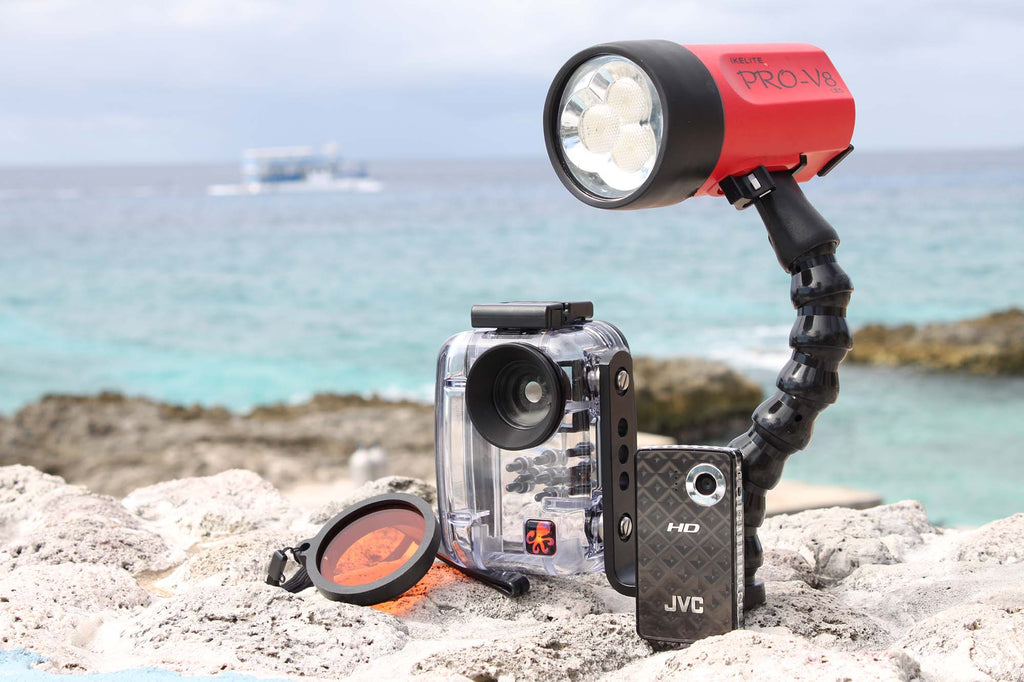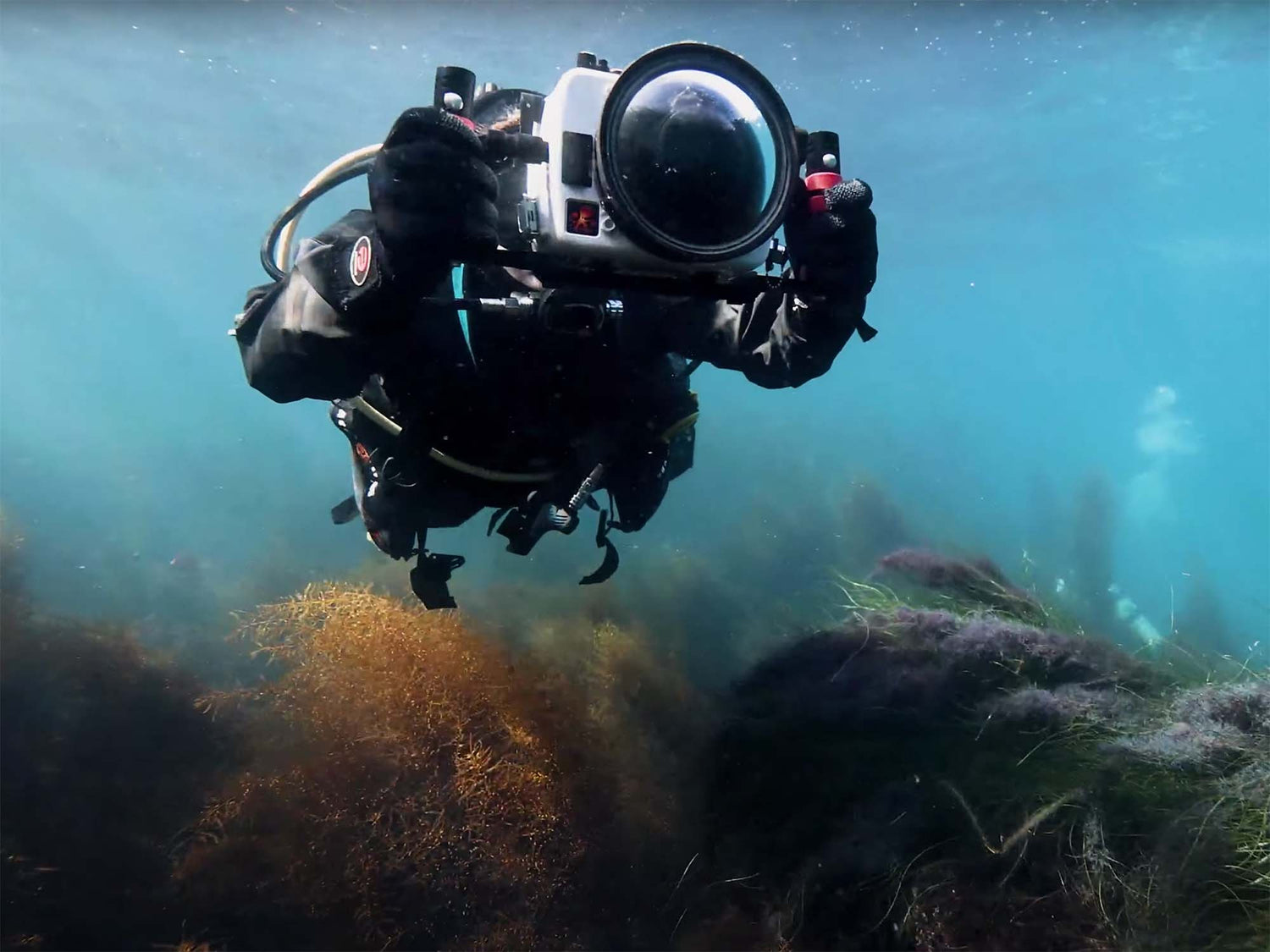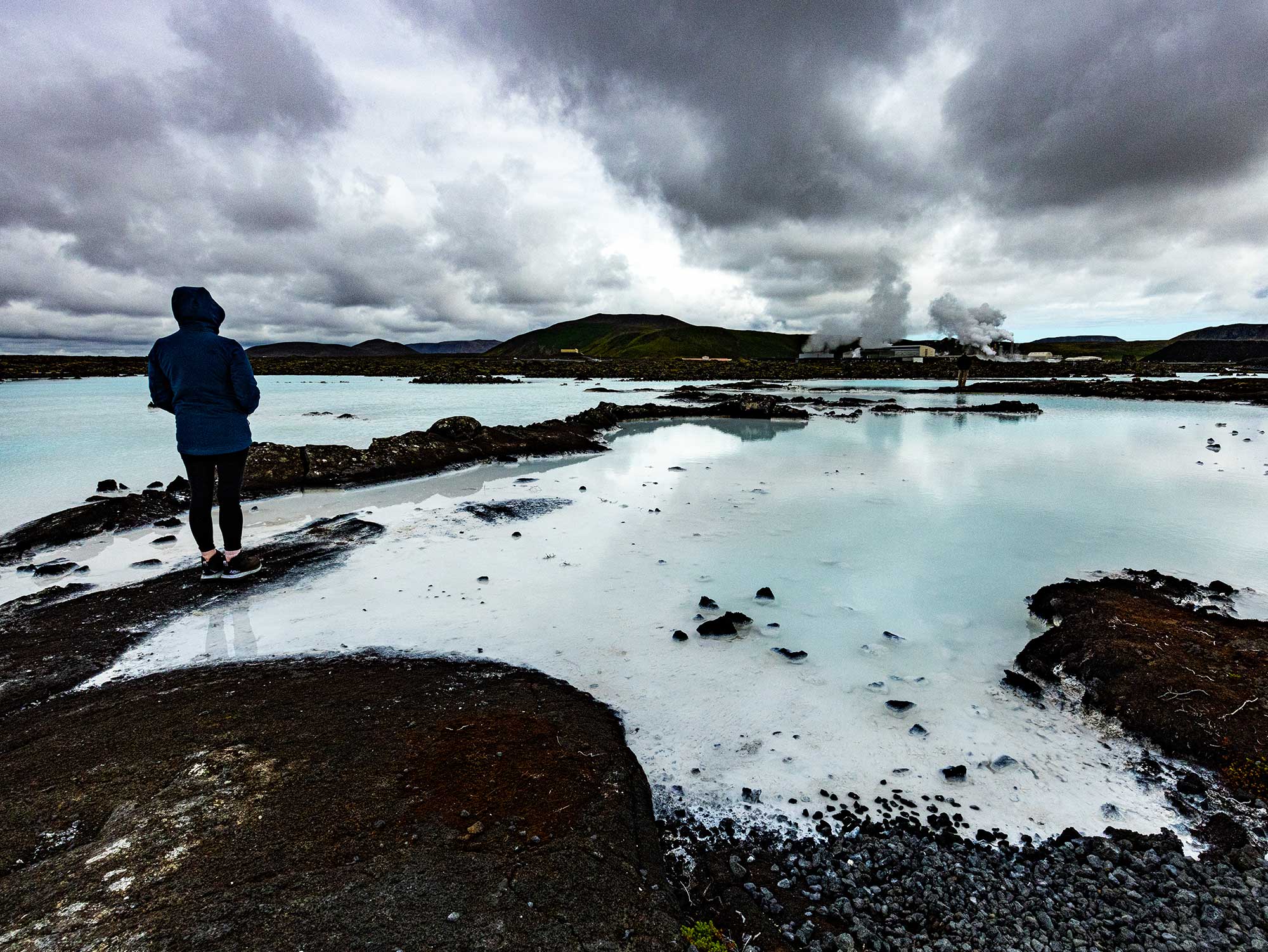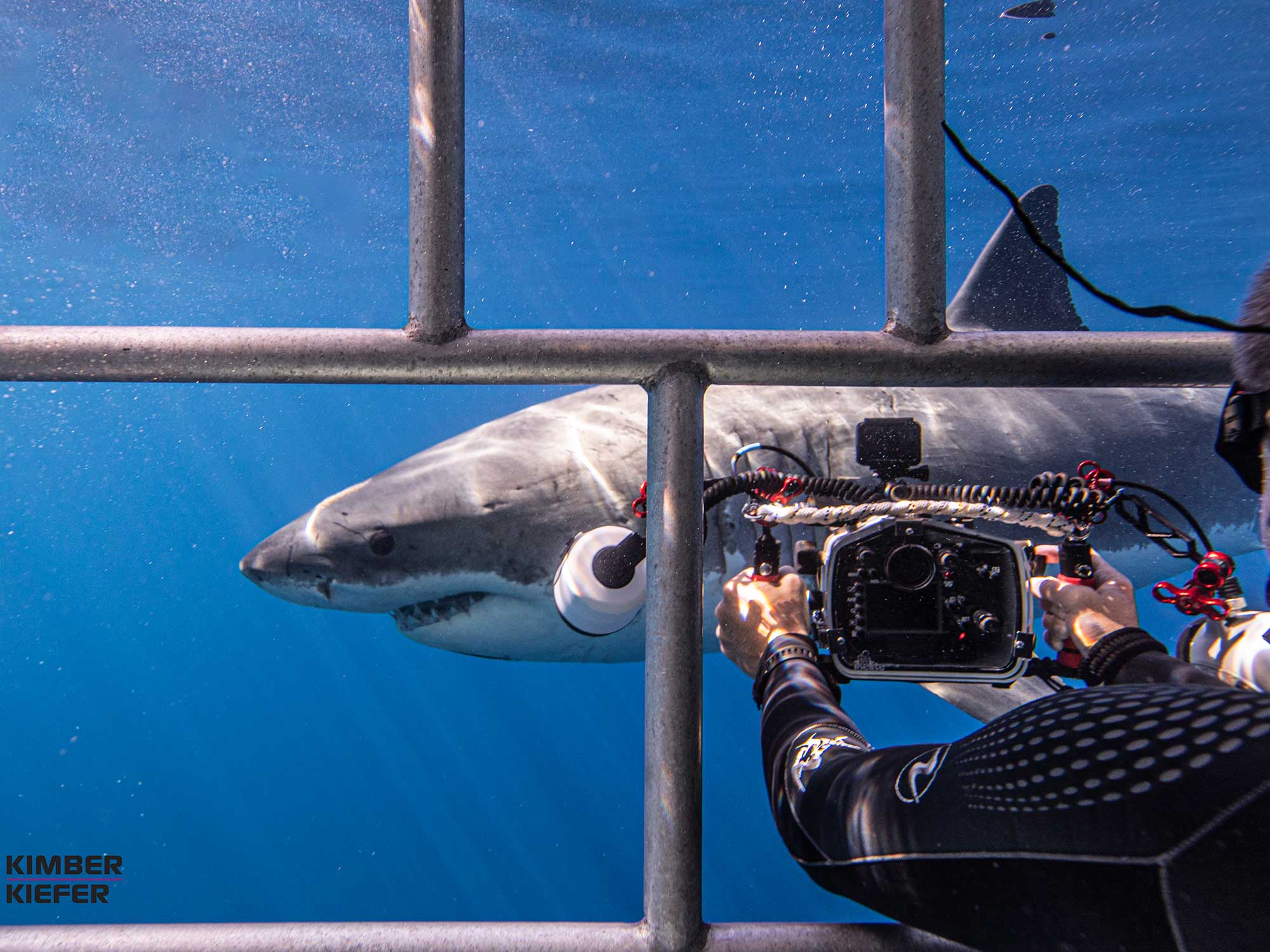By Jean Rydberg
Growing up as Ike's daughter, you would think that I would have grown up diving and rubbing elbows with the underwater photography elite. But dad had stopped diving by the mid-70's and I didn't actually know that Ikelite made something other than Aquashot housings and flashlights until I was an "adult" fresh out of college.
I'm not much of a swimmer, but diving felt natural to me and I quickly became obsessed learning from and diving with my coworkers. I came back really excited after my first real dive trip to Anthony’s Key Resort in Roatan, Honduras. I handed the memory card from my Olympus C-8080 over to my dad and watched as he quickly flipped through the photos on his computer. “No one bothered to give you any advice on how to take a decent picture?” I was crestfallen and confused. I was used to taking topside snapshots with a disposable film camera. What was a good underwater photo beyond having a subject in the middle of the frame?
To add insult to injury, my dad fell in love with a photo that a colleague had taken of me holding a sea cucumber for the camera. I though I looked ridiculous but he framed it and put it on a prominent shelf in his office. I had to see it every day when I talked to him at work.
Six months later, I took the first photo I was pretty proud of: a scrawled filefish in Grand Cayman with a Fujifilm FinePix F810.

My first successful underwater shot: a scrawled filefish off the coast of Grand Cayman. Macro photography is difficult to master but pretty simple to do decently. Despite my accomplishments I still don't think my Dad knew or cared what a scrawled filefish was.
A year and half later I went back underwater with a Nikon D200 and two DS125 strobes. The speed of the camera combined with a great fisheye lens and some manual exposure settings from David Haas finally worked for me. I came back with a memory card full of images that impressed my Dad. He even posted a selection of my Stingray City photos on the website.
I dove with all kinds of camera systems over the next few years - compact and DSLR - at a really fun time when digital cameras were getting better practically every month. I had a good time, learned a lot about underwater photography, and got some good images. Then I took a little camera called the Flip UltraHD as a backup camera to test out on a Blackbeard's Cruises trip to the southern Bahamas. It totally changed my viewpoint on underwater imaging.

Grand Cayman's Stingray City in my short-lived glory days of wide angle still photography. Sunny, shallow conditions and big action made high impact wide angle shots easy. That is, until the sand got stirred up.
In the glory days of digital camcorders, the Flip was a $200 pocket-sized, two button camera designed to record fun moments on the fly. It was so lightweight and there was no set-up involved. Suddenly I was shooting everything. For the first time I was diving with a camera system that I was also using to tell a more complete story of the my adventures above and below the water. I edited the video from my trip in iMovie and posted a 5 minute video online. Our sales skyrocketed and a market for the camera system seemed to be created out of thin air.
At the time we were partnering with JVC who soon released their answer to the Flip, the GC-FM1. I went back to my old stomping grounds in Grand Cayman to shoot a promo video which went on to receive over 17K views on YouTube- at the time, pretty big.

It's true that the JVC Picsio GC-FM1 pocket video camera wasn't the top of the line video technology at the time. But its pocketable size meant I took it everywhere and never hesitated to whip it out and capture a quick shot of wherever we were and whatever was going on.
By today’s standards, the cameras were horrible in terms of coverage angle and image stabilization. But I learned so much about underwater lighting, composition, and storytelling. I was shooting B-roll before I even know what that was. When the scrawled filefish come through at 2:50 in the Flip video, it brings the moment to life in a way that my photo from 2005 never could. At the time I wasn’t editing to music- I picked from YouTube’s limited free library by choosing from the small selection of music that happened to be close to the exact length of my edited video.
After that, all I wanted to do was shoot video. I see a lot of underwater imaging in my line of work. While I appreciate a detailed macro shot, I’m emotionally drawn to wide angle. But from behind the camera it was a different story. Macro photography provided me instant gratification of a vibrant and properly lit shot. I found wide angle still imaging to be significantly more difficult to master (impossible before I started asking for advice).
Video was a more forgiving entry into wide angle, as the motion of a nice subject or scene can distract poor coloring or imperfect focus. All I wanted to do was shoot video. It was as equally well suited to great white sharks in Guadalupe as it was to WWII wrecks in Chuuk Lagoon.
Soon thereafter, GoPro exploded onto the underwater scene. It seemed like everyone and their buddy started shooting underwater video. Still cameras were upgraded with amazing video capabilities putting the final nails in the coffin of the common consumer camcorder. Each model came with the unkept promise that I would find it natural to switch back and forth between still and video shooting throughout the dive. But my mind doesn't work that way apparently. I came back from a lot of dives frustrated and lost with a variety of content showing no real direction.
Dive, rinse, repeat for about a decade. For my 40th birthday I dropped in off the island of Catalina with the Canon EOS R6 and 8-16mm fisheye lens and two DS230 strobes. The bright orange Garibaldi fish were prancing snacking on small jellyfish. A Mola mola swam over me waving hello. Light rays and kelp were engaged in a vibrant waltz. And once again I found that all I wanted to do was shoot video. And I'm ok with embracing that.

My brother John Brigham and I very focused on a not very obvious subject during a dive off the coast of Catalina, among the kelp forests of California's Channel Islands. Watching the sun rays play across the colorful beds of sea grasses was mesmerizing. Photo © 2022 Gary Burns
Shooting video can be a bit of a meditation for me, particularly during surface intervals. I typically use a second camera outside of a housing unless I am shooting with a compact waterproof camera like the Olympus TG-6. There are mandatory shots of the boat’s wake as we’re moving. I can get lost looking for small details to shoot clips of, like a bumper bouncing, a tank being filled, or the compass bobbing with the motion of the boat. These little clips, and anything else I shoot during my travels, help to bookend a story of my dives.
I have noticed as video proliferates in our daily lives, the amount of underwater video content being shared among divers doesn’t seem to increase proportionally. I imagine that many thousands of dives are archived on hard drives all around the world, like some kind of long term research project that no one is collaborating on. Thus enters one the biggest challenges of underwater video: what the hell do you do with all of it?

Maybe I'm just a little anti-social, but I particularly love getting into the B-Roll zone and finding interesting little vignettes during a long boat ride and in between dives.
I try to review my content while it’s fresh in my mind. I make a sweep to delete footage that is out of focus or has no visual interest. I drop all of my favorite clips into an editing program - right now Final Cut Pro but could be iMovie or anything that’s easy to work with. Then I trim each clip to the best bits leaving about 1-second tail on each end if I plan to add transitions in between (like a dissolve).
The most important part is to export it and post it on YouTube, Vimeo, Instagram, or anywhere really. Not so much for the likes today. More for the ability to rediscover it a few years down the road, cast it to a big screen TV, and relive the adventure.
 Jean Rydberg, daughter of Ike Brigham, became President & CEO of Ikelite in 2006. She wisely pursued a degree in Astronomy & Astrophysics to prepare herself for the challenges of running a technology-driven manufacturing business with global distribution. Jean fully embraces the need to travel outside of her hometown of Indianapolis to experience good diving. She believes that any camera is capable of amazing results in the right hands, and anyone can become a great photographer given the right advice. When she's not working she's spending time with her husband, cats, and two daughters (though not necessarily in that order).
Jean Rydberg, daughter of Ike Brigham, became President & CEO of Ikelite in 2006. She wisely pursued a degree in Astronomy & Astrophysics to prepare herself for the challenges of running a technology-driven manufacturing business with global distribution. Jean fully embraces the need to travel outside of her hometown of Indianapolis to experience good diving. She believes that any camera is capable of amazing results in the right hands, and anyone can become a great photographer given the right advice. When she's not working she's spending time with her husband, cats, and two daughters (though not necessarily in that order).
Additional Reading
Jenna Martin's TEDx on Becoming an Underwater Portrait Photographer
The Making of The Rapture of the Deep with the Panasonic GH5
The Power of Total Immersion | Erena Shimoda Talk at Google













